Football
Chalk Talk: How OSU Can Use the Cowboy Back (Part 1)
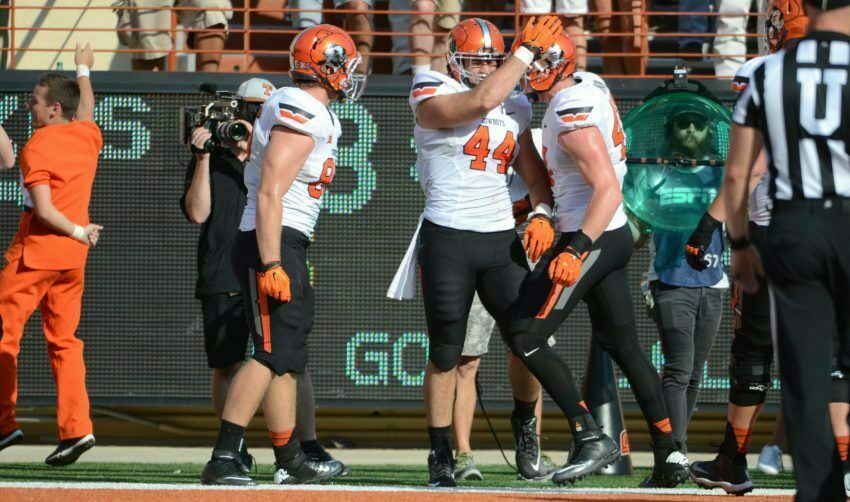
The cowboy back position is relatively exclusive to Oklahoma State. While many teams will interchange players between tight end, H back and fullback, the Cowboys are one of the only ones who have not only given them a name but also made them a focal point of the offense.
In a previous Chalk Talk article, we talked about how adding a tight end or fullback brings in an extra linebacker into the box, thus making it more cluttered for the run game. But that doesn’t mean that the cowboy back should be scrapped; it can actually be a valuable weapon for any offense. In this week’s edition of Chalk Talk, we will discuss how the cowboy back can be fully optimized in a modern offense.
Today, we will be specifically be looking at run-pass options involving the cowboy back at both the tight end and fullback positions.
Y Pop/ Inside Zone RPO
The cowboy back can put stress on a defense in any basic run pass option (RPO). In the diagram below, the cowboy back, aligned as a tight end, runs a seam route, also called a “pop” route. This route puts heavy stress on the strong side linebacker. If the ‘backer crashes on the run, the quarterback can abort the handoff and throw behind him; and if he covers the route, the quarterback can hand off the ball with one less man in the box. The quarterback also has other pre-snap RPOs on both the strong and weak side of the formation.
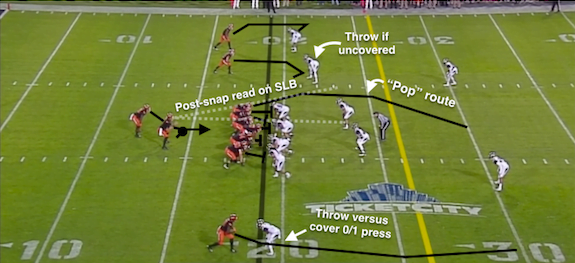
Watch as the strong-side linebacker bites on the run and leaves open grass behind him. The slot corner sees the play and tries to cover the route, but he is in bad position and can’t prevent the completion.
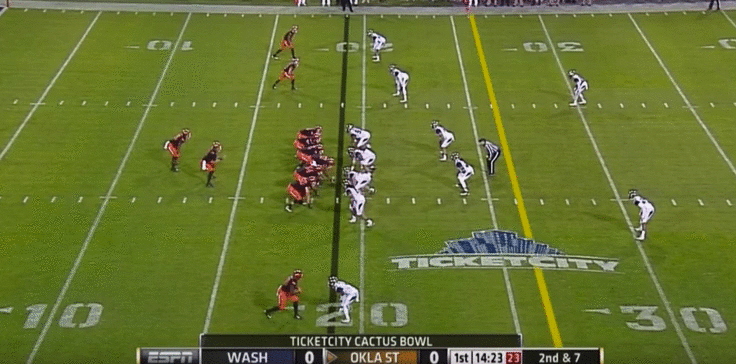
The pop route/inside zone combination has the tight end as the primary target, but if he’s covered, it opens up for the packaged run play. It’s a perfect wrinkle for a team that wants to get their tight end easy receptions.
Y Flat/Inside Zone RPO
There are other ways to get quick completions to the cowboy back. In this example, the cowboy back, now positioned as a ‘buck’ or upback, runs to the flat on an inside run play. The quarterback watches the play-side linebacker. If he covers the flat route, the quarterback hands the ball off. But, theoretically, if the SLB stays where he is or commits to the run, the quarterback can pull the ball and read the play-side corner, throwing to whomever isn’t covered.
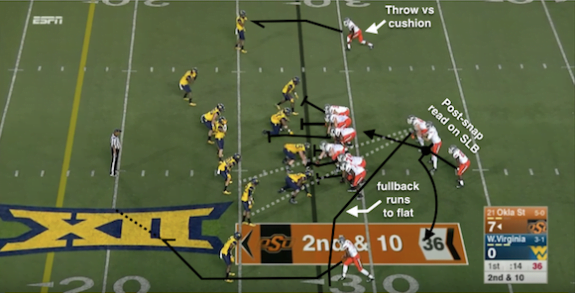
Out of the handful of times that the Cowboys have ran this play, they have yet to throw on it. In the example below, quarterback Mason Rudolph could have pulled the ball and thrown to an open flat route, but instead handed it off for no gain.
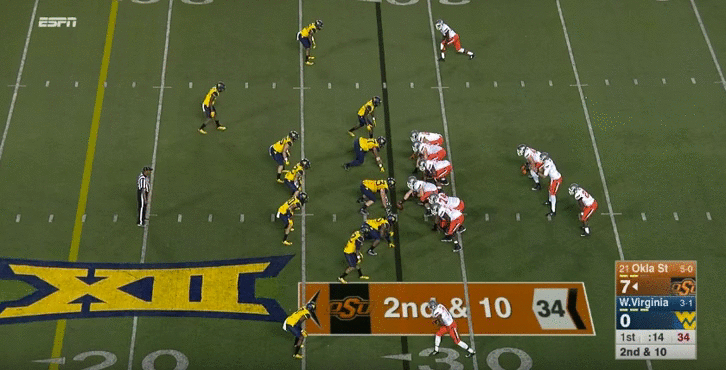
Many teams will leave the end man on the line of scrimmage unblocked and read him. In that case, it becomes a two-tier post-snap read, the first one being a give/keep read and the second being a take off yourself/throw read. Creative plays like this are an excellent way to keep the tight end involved. It’s also difficult for a defense to cover because there’s so much going on.
Plays like these would make defenses go crazy because they would both have to locate the cowboy back, because he can line up almost anywhere, and then worry about if he’s going out for a route. In part two, we will discuss how the CW (used instead of CB, which could cause confusion) could be used as an effective blocker in the run game.
That was part one of this week’s chalk talk! Part two and three will be released later in the week.

-

 Hoops4 days ago
Hoops4 days agoUCF Transfer Marchelus Avery Commits to Oklahoma State
-
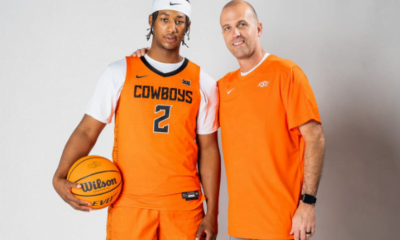
 Hoops4 days ago
Hoops4 days agoWashington Transfer Wesley Yates Visits Oklahoma State
-
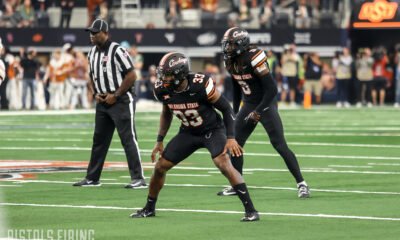
 Football3 days ago
Football3 days agoOklahoma State Linebacker Donovan Stephens Enters Transfer Portal
-
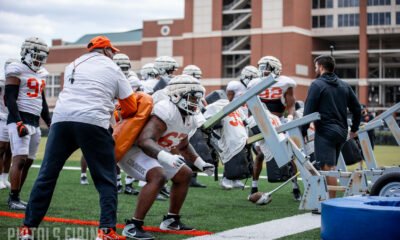
 Football3 days ago
Football3 days agoSpring Football: A Defensive Line Switch That Could Utilize the Cowboys’ Playmakers






